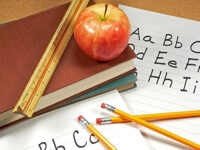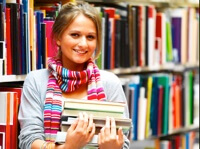Slovakia – my homeland
Autor: anika
Typ práce: Maturita
Typ práce: Maturita
Dátum: 28.06.2011
Jazyk:
Jazyk:
Rozsah: 1 987 slov
Počet zobrazení: 70 658
Počet zobrazení: 70 658
Tlačení: 1 874
Uložení: 1 504
Uložení: 1 504
Slovakia – my homeland
Talk about – rozprávajte o:- General information – všeobecné informácie:
- Location + population – poloha + obyvateľstvo
- Mountains -hory
- Rivers - rieky
- Climate - podnebie
- Industry & agricalture – priemysel a doprava
- Political system + education – politický systém + vzdelávanie
- History of Slovakia – história SR
- Places of interest in Slovakia – zaujímavé miesta na Slovensku
- The place you would reccomned to a foreigner – miesto, ktoré by si odporučil cudzincovi
- People & their customs + traditions – ľudia a ich zvyky + tradície
- Bratislava – the capital city of Slovakia – hlavné mesto SR
1. General information
The official name of our country is The Slovak republic.A.) LOCATION /poloha/: Slovakia is situated /nachádza sa/ in the Central Europe – we can say that it is in the heart of Europe /v srdci Európy/. Slovakia is a small country – its area /rozloha/ is 49.036 km2 /square kilometres = štvorcové km/. It has the population of about 5 and a half million people.
It borders on /hraničí s/: Czech republic, Poland, Ukraine, Hungary, Austria
B.) MOUNTAINS /hory/: Slovakia is a very mountainous /hornatá/ country.
In the north /sever/ there are the High Tatras / Vysoké Tatry/ with the highest peak /najvyšší vrchol/ the Gerlach Peak /Gerlachovský štít/. There are also other peaks – for example Kriváň Peak and tarns /plesá/ - for example Štrbské pleso, Popradské pleso.
The Low Tatras /Nízke Tatry/ - they are not as high as the High Tatras but the nature there is beautiful and it is an ideal place for hiking /turistika/ - the most popular peaks in the Low Tatras are Ďumbier, Zvolen, Chopok, Kráľová Hoľa.
In the west /západ/ there are the Big Fatra /Veľká Fatra/, the Small Fatra /Malá Fatra/, the White Carpathian Mountains /Biele Karpaty/, the Small Carpathian Mountains /Malé Karpaty/.
In the east part /východná časť/ of central Slovakia there are mountains called the Slovak Paradise /Slovenský raj/ and the Slovak Karst /Slovenský Kras/.
C.) RIVERS /rieky/ and LAKES /jazerá/ - the biggest rivers are the river Danube, Moravia, Hron, Ipeľ and Ondava. The most important river is the river Danube – in Bratislava, Komárno and Štúrovo there are also ports /prístavy/. The longest river is the river Váh. Slovakia doesn’t have many lakes. The most important lakes are in the High Tatras – they are called tarns /plesá/– for example Štrbské pleso, Popradské pleso and so on. The biggest dams /priehrady/ are Domaša Dam, Liptov Dam, Orava Water Dam, Zemplínska Šírava… and the biggest water power station /vodná elektráreň/ is Gabčíkovo.
D.) CLIMATE /podnebie/ in Slovakia is mild. The warmest part of Slovakia is the south.
E.) INDUSTRY and AGRICULTURE /priemysel & poľnohospodárstvo) – the biggest and for our economy the most important factories are the USS (the US Steel) Košice, VW Bratislava and Slovnaft. Woodworking industry /drevospracovateľský priemysel/ is based in Zvolen, B. Bystrica. We can find the food industry in every town in Slovakia – the most important factories are in Bratislava, B. Bystrica, Martin ... The most of the industry is situated in the west of Slovakia which is bad for people living in other parts of Slovakia – many people are unemployed – for example in the east or in the north – Kysuce region…
Agriculture is very important for Slovakia – people in Slovakia grow potatoes /zemiaky/, sugar beets /cukrová trstina/, corn /kukurica/. In Pezinok and Modra people usually grow /pestujú/ grape-wine /vinič, hrozno/. People in Slovakia also grow fruit and vegetables. Animal production is important, too – people keep cows /kravy/, goats /kozy/, hens /sliepky/ - in hen farms, pigs /prasatá/, sheep /ovce/ ...
2. The history of Slovakia
The area of modern Slovakia was settled /bola osídlená/ by Slavs /Slovanmi/ at the end of the 5th century /storočie/. They belonged /patrili/ to Samo’s Empire /Samova ríša/. Later the Samo’s Empire was broken and Slavs became a part of 2 princedoms /kniežatstvo/ - Pribina’s Princedom and Mojmir’s Princedom. These two princedoms were united /spojené/ and they became the Great Moravian Empire /Veľkomoravská Ríša/. In 863 Cyril and Methodius came and they brought the Christian religion to this region – they were also the founders /zakladatelia/ of the Slavic script /Slovanského písma/. At the beginning of the 10th century the Great Moravia ended and the area of Slovakia became the part of the early feudal Hungarian state – the following centuries /storočia/ were hard for Slavs - there were Tatar and Turkish invasions – they lasted for about 150 years. After that, in the 19th century we became a part of the Austro-Hungarian Monarchy (Rakúsko-Uhorsko). Personalities as /osobnosti ako/ Ľ. Štúr, Hurban, Hodža ... fought for our independence /nezávislosť/. After the World War I. in 1918 the Czechoslovak republic was established /založená/, later in 1938 the Slovak State and in 1948 the communists came to power => the Czechoslovakia again. In 1989 there was a revolution in the Czechoslovakia and the two countries were divided. From 1st January 1993 Slovakia is independent.3. Places of interest
There are many interesting places in Slovakia. These are:- Old towns/villages => Vlkolínec, Čičmany, Vychylovka, Rajecká Lesná
- Caves – jaskyne => The Dobšinská Ice Cave, Belianska Cave, Domanica
- Castles – hrady => Devín Castle, Bratislava Castle, Bojnice Castle, Beckov
- Spas /spa baths/ – kúpele => Piešťany, Bardejov, Rajecké Teplice
- Bratislava
The nature in Slovakia is very beautiful – in summer we can go hiking /na turistiku/ and in winter, we can go skiing in our mountains. We have The High Tatras and The Low Tatras - the nature there is protected by law (TANAP).
You can also visit old town and villages – for example Vlkolínec, Čičmany, Vychylovka where we you can see how people in Slovakia lived in the past – there are old wooden houses. Vlkolínec is protected by UNESCO. In Rajecká Lesná there is an old wooden Bethlehem.
In Slovakia there are many caves – The Dobšinská Ice Cave is the largest ice cave in Europe. Other caves are the Cave of Freedom /Jaskyňa Slobody/, Belianska Cave, Gombasecká, Domica...
There are also some very nice castles in our country – for example:
Bojnice castle – every year there is a ghost festival /festival strašidiel/.
Čachtice – a home of a bloody countess /krvavá grófka/ Alžbeta Báthoryová who killed young women and bathed in their blood /kúpala sa v ich krvi/.
Other castles are Beckov ruins, Trenčín Castle, Bratislava Castle, Spiš Castle, Orava Castle, Strečno, Krásna Hôrka and so on.
In Slovakia we have spa baths in Piešťany, Bardejov, Rajecká Lesná.
People who come to Slovakia should also visit a historical town called Kremnica – there was a mine for gold and this town is famous for the production of golden coins /zlaté mince/.
4. The place I would recommend to a foreigner
To a foreigner I would recommend these places …………………………… /the mountains, old towns and villages, castles, caves, spas, Bratislava, Kremnica…/5. People and their customs + traditions
Slovak people are very friendly and hospitable /pohostinní/ but they are not very rich. They like traditional music and dancing and therefore there are many folk festivals in Slovakia every year – for example in Detva, Východná... At these festivals you can hear folk music and see many beautiful folk costumes and folk dances. These festivals are also visited by foreign tourists. We also have typical food. Our national dish /národné jedlo/ is “Bryndzové halušky“ which is a meal made of potatoes and cheese called bryndza. We have very good cheese in Slovakia – for example, oštiepok and parenica. Slovak national hero is Juraj Jánošík.Slovak people are Christians and because of this the most important holidays are Christmas and Easter. For Christmas and Easter the Slovak families usually get together – they visit each other, bake cakes and cook traditional meals.
6. Bratislava
Bratislava is the capital city of Slovakia. It is situated on the banks /breh/ of the river Danube and therefore it has a very good position. It is also an important industrial city and it is important for our economy – there are many factories there – for example Slovnaft, VW, Palma and so on. The city has the unemployment rate /miera nezamestnanosti/ of only about 3 %. People who like shopping can shop in popular shopping centres Aupark and Polus.In Bratislava there are many historical buildings and sightseeing places:
- The Slovak National Theatre /Slovenské Národné Divadlo/ - on the Hviezdoslav Square /Hviezdoslavovo Námestie/ – there is a statue of P.O. Hviezdoslav – an important Slovak writer
- The Slovak National Gallery
- Slovak Philharmonic Orchestra – REDUTA – it is often used for many social and cultural events
- Grassalkovich Palace /Grasalkovičov Palác/ – the President’s Palace – it is the residence of our president
- Primate’s Palace /Primaciálny Palác/ - there is the famous Mirror hall /Zrkadlová sieň/
- Bratislava Castle
- St. Michael’s Gate /Michalská Brána/
- The St. Martin’s Cathedral /Svätomartinská katedrála/ - in the past kings and queens were crowned there – 11 kings and 8 queens
- Academia Istropolitana – the building of the first university in the Hungarian Kingdom
- a statue of Čumil /socha Čumila/ - a statue of a man who is sticking his head out of a hole in the road – it is a popular attraction for tourists.
Vocabulary:
tarn – pleso /horské/the nature - príroda
hiking - turistika
important - dôležitý
port - prístav
lake - jazero
dam - priehrada
water power station - vodná elektráreň
industry – priemysel
agriculture - poľnohospodárstvo
food industry – potravinársky priemysel
woodworking industry - drevospracovateľský priemysel
factory - továreň
unemployed – nezamestnaný
the unemployment rate – miera nezamestnanosti
grow - pestovať
potatoes - zemiaky
sugar beets - cukrová trstina
corn - kukurica
grape-wine - vinič, hrozno
animal production – produkcia zvierat
keep cows – chovať kravy
goats – kozy
hens – sliepky
hen farms – slepačie farmy
pigs – prasatá
sheep – ovce
area – územie
settle – osídliť /The area of modern Slovakia was settled by Slavs in the 5th century. – Územie moderného Slovenska bolo osídlené Slovanmi v 5. storočí./
Slavs – Slovania
centrury – storočie
belong – patriť
the Samo’s Empire - Samova ríša
princedom – kniežatstvo
unite - spojiť /were united – boli spojené/
become - stať sa
the Great Moravian Empire - Veľkomoravská Ríša
arrive – prísť
bring /min. čas “brought”/ - priniesť
Christian religion – kresťanské náboženstvo
founder – zakladateľ
the Slavic script - Slovanské písmo
invasion – invázia, nájazd
last – trvať
fight for /min. čas “fought”/ - bojovať za
independence – nezávislosť
establish – založiť
power – moc
divide – rozdeliť
protect - ochraňovať
protected by law - zákonom chránený
in the past – v minulosti
wooden houses – drevené domčeky
kill - zabiť
ruins - ruiny
spa baths – kúpele
they should - oni by mali
called – nazývaný
a mine – baňa /a mine for gold – baňa, kde sa ťaží zlato/
famous for – slávny pre /kvôli/
recommend - odporučiť
customs – zvyky
hospitable - pohostinný
like – mať rád
folk festival – folklórny festival
folk costumes – ľudové kroje
folk dance – folklórny tanec
foreign tourists – zahraniční turisti
a meal – jedlo /A meal made of potatoes and cheese called bryndza. – Jedlo vyrobené zo zemiakov a syra nazývaného bryndza./
cheese – syr
the national hero – národný hrdina
Christian – kresťan
because of this – preto
Easter – Veľká noc
get together – stretnúť sa
bake cakes – piecť koláče
cook traditional meals – variť tradičné jedlá
the capital city – hlavné mesto
therefore – preto
sightseeing places – miesta, kde si môžeme pozrieť pamiatky
event - udalosť
residence - sídlo
king – kráľ
queen – kráľovna
crown – korunovať
a building – budova
a statue – socha
stick out – vystrčiť von /A statue of a man who is sticking his head out of a hole in the road. – Socha muža, ktorý vystrkuje hlavu von z diery na ulici./
attraction – atrakcia
homeland - domovina
| Podobné práce | Typ práce | Rozsah | |
|---|---|---|---|
|
|
Vocabulary: Slovakia – my homeland | Referát | 285 slov |
|
|
Audionahrávka MP3: Slovakia My Homeland | Maturita | 1 291 slov |
|
|
Slovakia - My Homeland | Maturita | 514 slov |
|
|
My Homeland – Slovakia – sloh | Ostatné | 341 slov |
|
|
Slovakia - My Homeland | Referát | 696 slov |
|
|
Slovakia - My Homeland | Maturita | 1 179 slov |
|
|
Slovakia – My Homeland essay | Maturita | 1 416 slov |
|
|
SLOVAKIA – My Homeland téma | Maturita | 592 slov |
|
|
Slovakia - My Homeland + questions | Referát | 419 slov |
|
|
Slovakia – Vypracované zadanie na VIDEO | Maturita | 9 slov |
|
|
Slovakia my country | Maturita | 3 085 slov |
|
|
Slovakia – Vypracovaná téma na VIDEO | Maturita | 9 slov |
|
|
My homeland - Slovakia | Referát | 236 slov |
|
|
Slovakia – Opis obrázku na VIDEO | Maturita | 9 slov |
|
|
Slovakia – My Homeland | Učebné poznámky | 1 401 slov |
Vyhľadaj ďalšie študentské práce pre tieto populárne kľúčové slová:
#slovakia my homeland #typicke slovenske jedla v anglickom jazyku #Slovakia #historia slovenska-po anglicky #moving to slovakia sloh #slovakia my homeland maturita #tradicie a zvyky regionu abov #slovakia maturita #slovakia-my-homeland #Slovakia – my homeland #sloh A place in Slovakia #A Place in Slovakia #slovakia – my homeland maturita #sloh o slovensku #Zvyky a tradicie po anglicky sloh #my homeland #moving to slovakia #anglictina #angličtina maturita #bratislava anglictinaDiskusia: Slovakia – my homeland
Pridať nový komentárOdporúčame
Cudzie jazyky » Angličtina
:: Exchange Rates Euro
:: KATEGÓRIE – Referáty, ťaháky, maturita:
Vygenerované za 0.016 s.
















